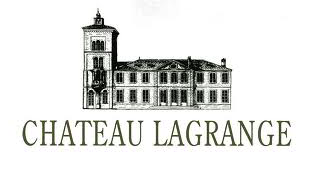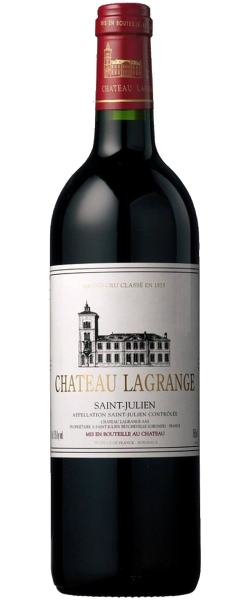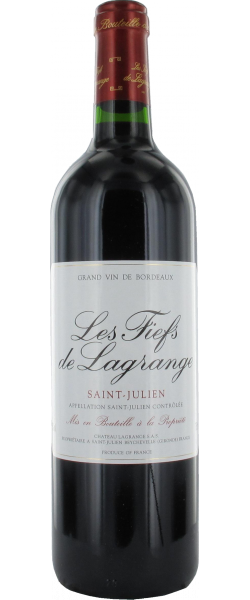
The Estate
This estate was a place of great agricultural activity centuries ago. Initially called “Villa Rustica” in Gallo-Roman times, it was renamed “Grangia” in the Middle Ages which was the origin of the estate’s current name, Chateau Lagrange.
Lagrange discovered a vocation for winegrowing thanks to the Templars who united 2 domains: the “maison noble de Lagrange de Monteil” to the west joined the “Tenure of Pellecalhus” to the east. In the present-day vineyard, the names of two vine plots hearken back to this era, “l’Hôpital” and “La Chapelle.” After this unification, Lagrange became the largest wine producing estate in the Médoc.
In the early 18th century, Baron de Brane, a Bordeaux parliament member and owner of Mouton, acquired the property and its renown became more widespread.
In 1790, Jean-Valère Cabarrus, an influential merchant known to be very active in the shipping business, invested in the property and established his own sales network. In 1820, he commissioned Visconti to build the Tuscan-style tower that was to become the emblem of Château Lagrange.
During a trip to Bordeaux in 1785, Thomas Jefferson (then President of the United States), judged Lagrange second among the Third Classified Growths. In 1855, Lagrange was officially ranked among Third Classified Growths, thanks to the work of Count Duchâtel, owner from 1842-1874.
The Japanese group, Suntory, acquired the domain when the purchase was signed by the company president, Mr Keizo Saji, in 1983. Marcel Ducasse was then recruited along with Kenji Suzuta to undertake the complete restructuring of the vineyard and a spectacular renovation of the whole estate. After 20 years of dedicated work, as well as human and technical investments, Lagrange has once again found recognition amidst its peers and had achieved a certain sense of fulfilment.
Today, Matthieu Bordes and Keiichi Shiina have taken over this quest for excellence. A second phase of investments began with the 2008 vintage, offering Lagrange the technical means to follow its ambitions: The production of refined, elegant, and expressive wines, in the best Saint-Julien style. There has also been an evolution of production methods towards a greater awareness of the environment and a reduction of ecological impact on the property.
This philosophy is reflected not only in the respect shown for the domain’s history, and the nurturing of its truly exceptional terroir, but also in the unique experiences shared all over the world around a glass of one of Lagrange’s wines.

Saint-Julien 3ème Cru Classé
Location: Completely situated in the village of Saint-Julien, the estate is spread over 2 hills with the slopes directed towards the North and the South.
Soil: The subsoil is of clay and limestone and the topsoil is made of pebbles and gravel.
Production Area: 111 hectares in red vines.
Grape Varieties: Cabernet Sauvignon, Merlot, and Petit Verdot.
Plantation Density: 7,500-10,000 vines per hectare
Average Age of the Vines: 40 years old
Vines: “Medocain” fixation on 3 wires to get the best sun exposure possible. Pruning to control the yield (4 to 6 buds left). Controlled phytosanitary treatments. Thinning of the extra grapes in July. Thinning out of the leaves in July on both sides of the row to improve the air circulation an reduce the level of humidity in the grapes. Maturity checking per plot
Harvest: Hand picking into individual crates. 120 pickers on average recruited according to the daily needs by a specialized agency, allowing a considerable flexibility of harvest to optimize the ripeness. Last sorting grape by grape with an optical camera. Plot by plot vinification in 98 stainless steel vats of which 78 are small capacity (66 to 90hl). Co-inoculation allowing simultaneous alcoholic and malolactic fermentations in the aim of protecting the wine and reducing the manipulation throughout the sensitive phase.
Vinification: First sorting by hand on whole bunches to eliminate those showing imperfections. Latest state-of-the-art de-stemmer less damaging for the grapes. Intra-plot selection thanks to 98 tanks. The contents of vats are selected according to the grape varieties, the age of the vines, the terroir, and the maturity. 220hl to 66hl stainless steel vats with thermo regulation. Moderate pumping-over everyday, pigeage. Maceration from 15 days to 3 weeks. Selection of free-run wine and of press wine. Blending selection of the Grand Vin (Château Lagrange) and the second wine (Les Fiefs de Lagrange) in February, following the harvesting. 12% of press wine in Château Lagrange. 40% Château Lagrange and 60% Fiefs de Lagrange.
Aging: Air conditioned cellars with regulated hygrometry. 60% of new oak barrels every year for Château Lagrange, maturing for 21 months. Maturing with the bung on top for about 6 months (2 top-ups per week). Racking every 3 months. Fining in barrel with fresh egg-whites — Final blending before bottling
Consultant Oenologist: Eric Boissenot
General Manager: Matthieu Bordes
Technical Manager: Benjamin Vimal

Les Fiefs de Lagrange
Overview: The second wine of the property was first produced in 1985 following the acquisition by Suntory group.
Average Age of the Vines: 30 years old
Soil: Gravel and clay
Vinification: Same methods as the Grand Vin, which produces a wine that is characterized by round tannins, aromas of red and black fruit in its youth, and good cellaring potential.
Grape Varieties: Cabernet Sauvignon, Merlot
Tasting Notes: Red in color with purple hues, a complex nose, with a rich mouth typical of this great vintage of Fiefs! Cherry, blackcurrant, licorice, and pepper aromas dominate the palate but also with a cool roundness that brings with it a certain elegance. A long finish.


